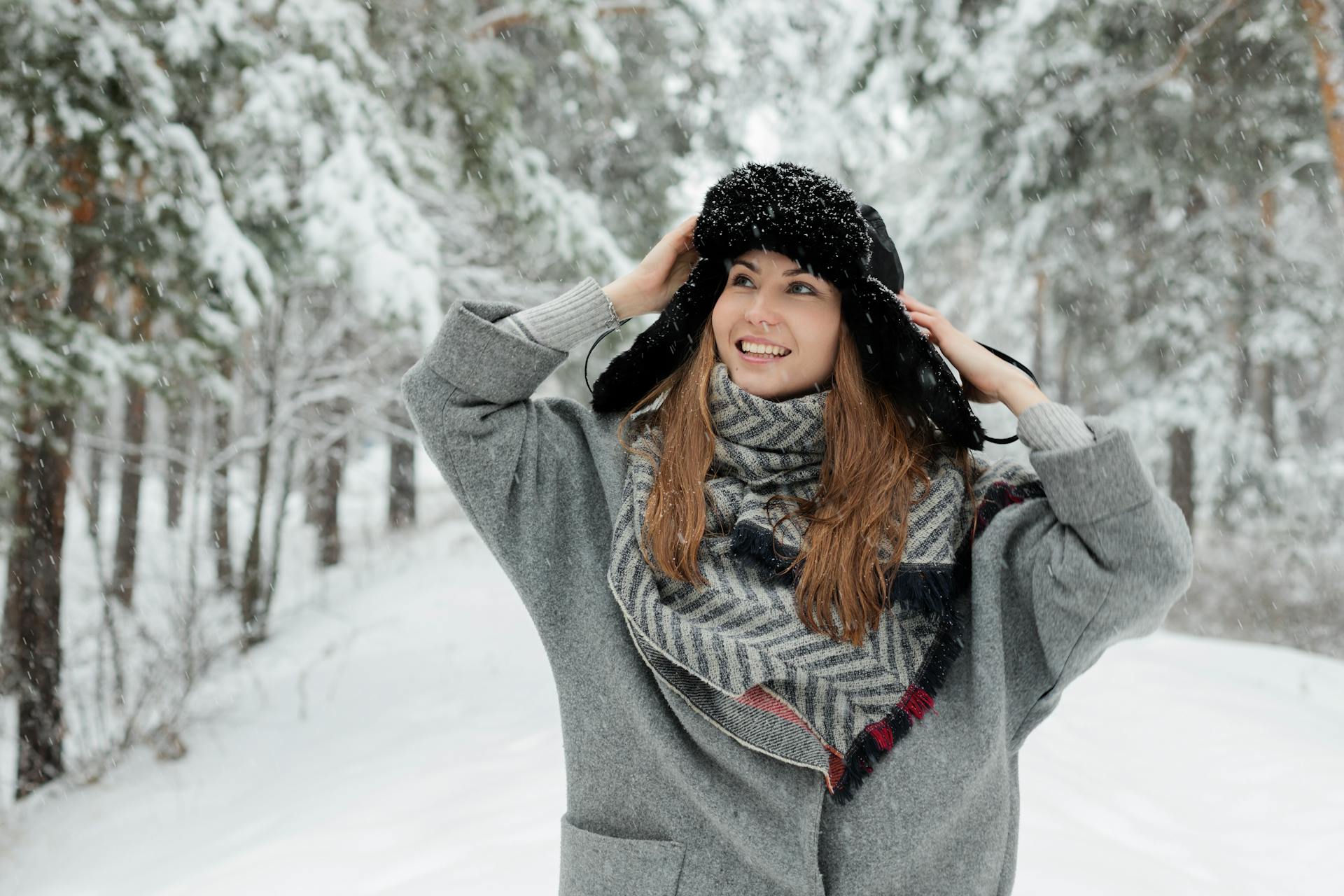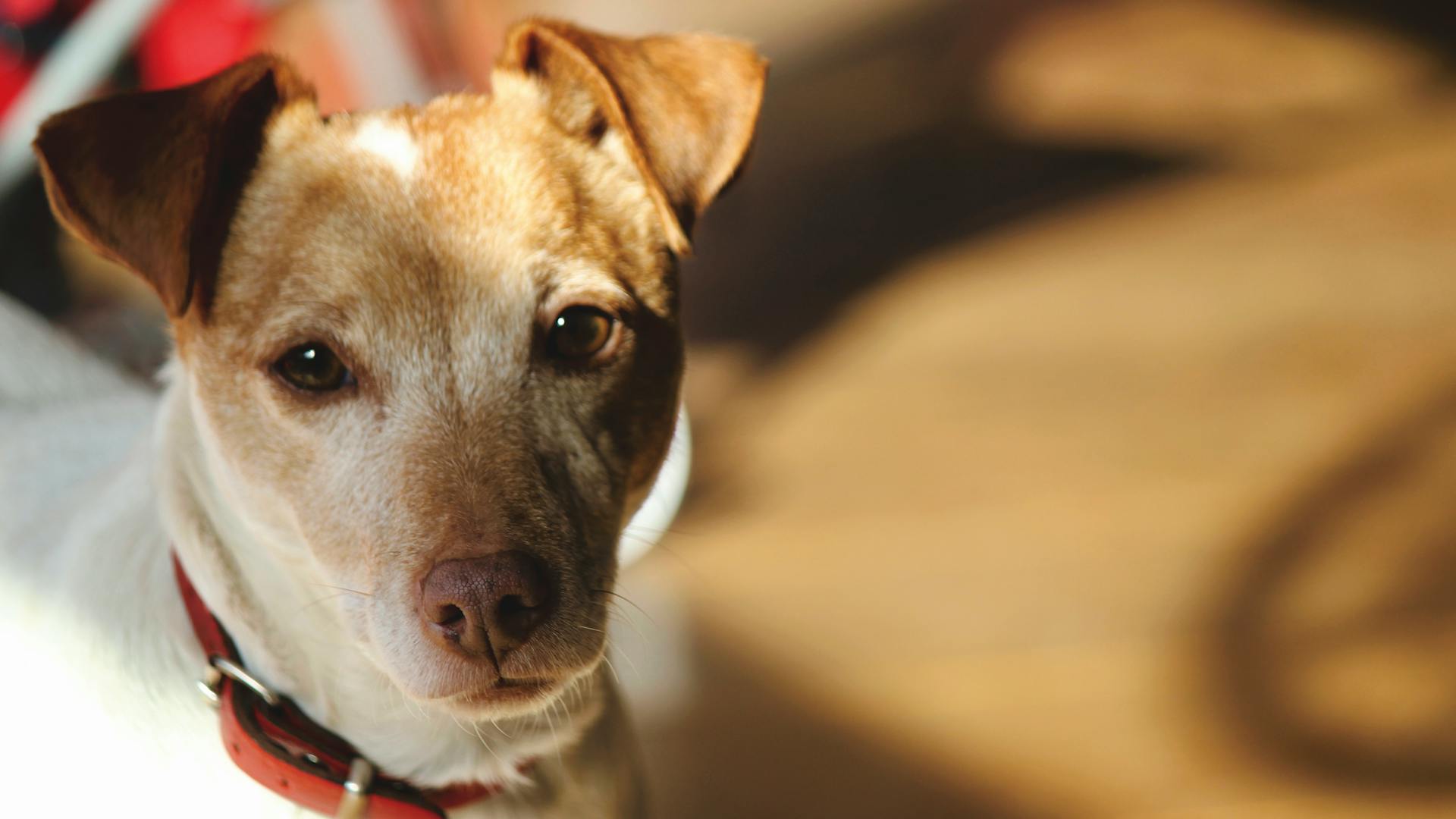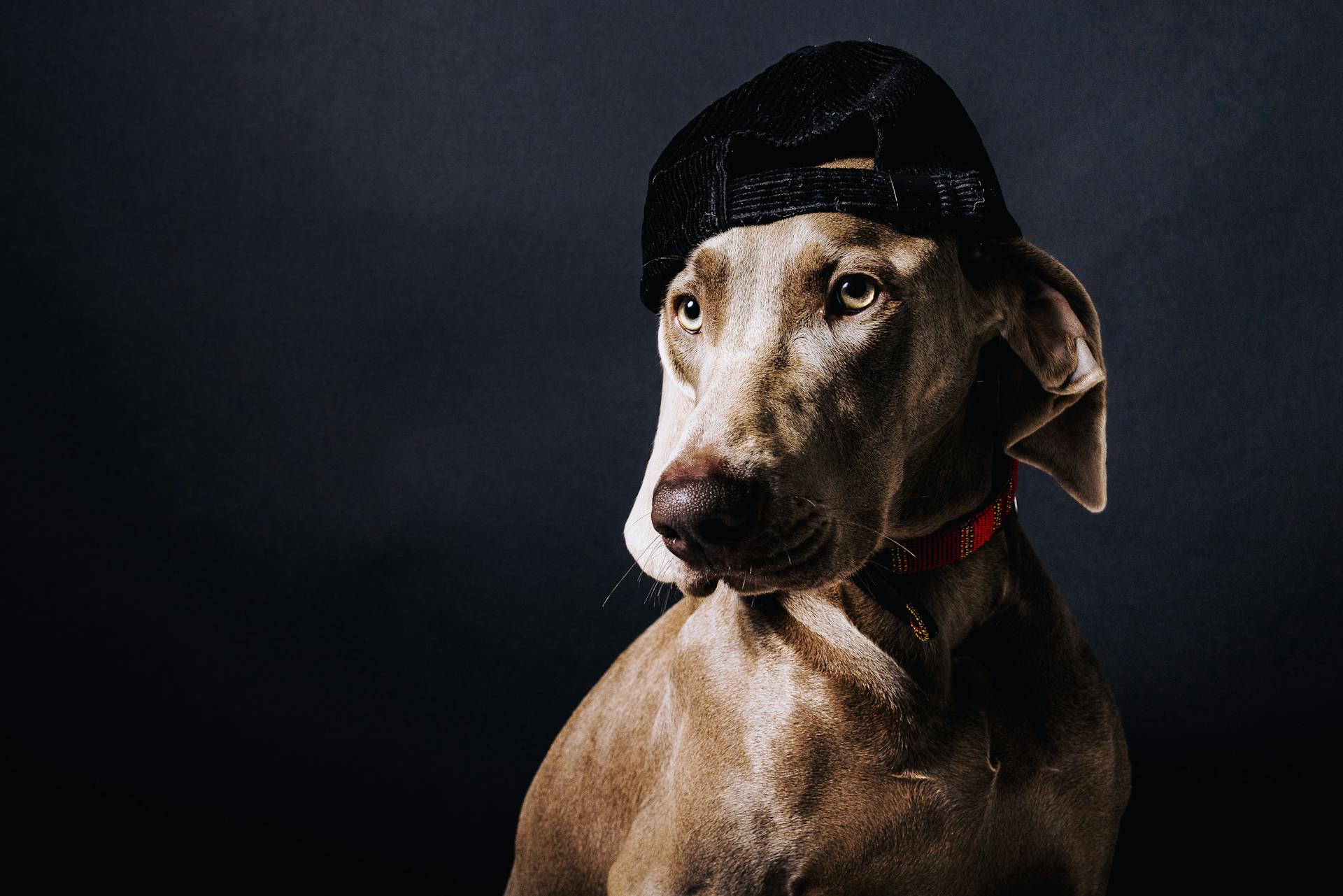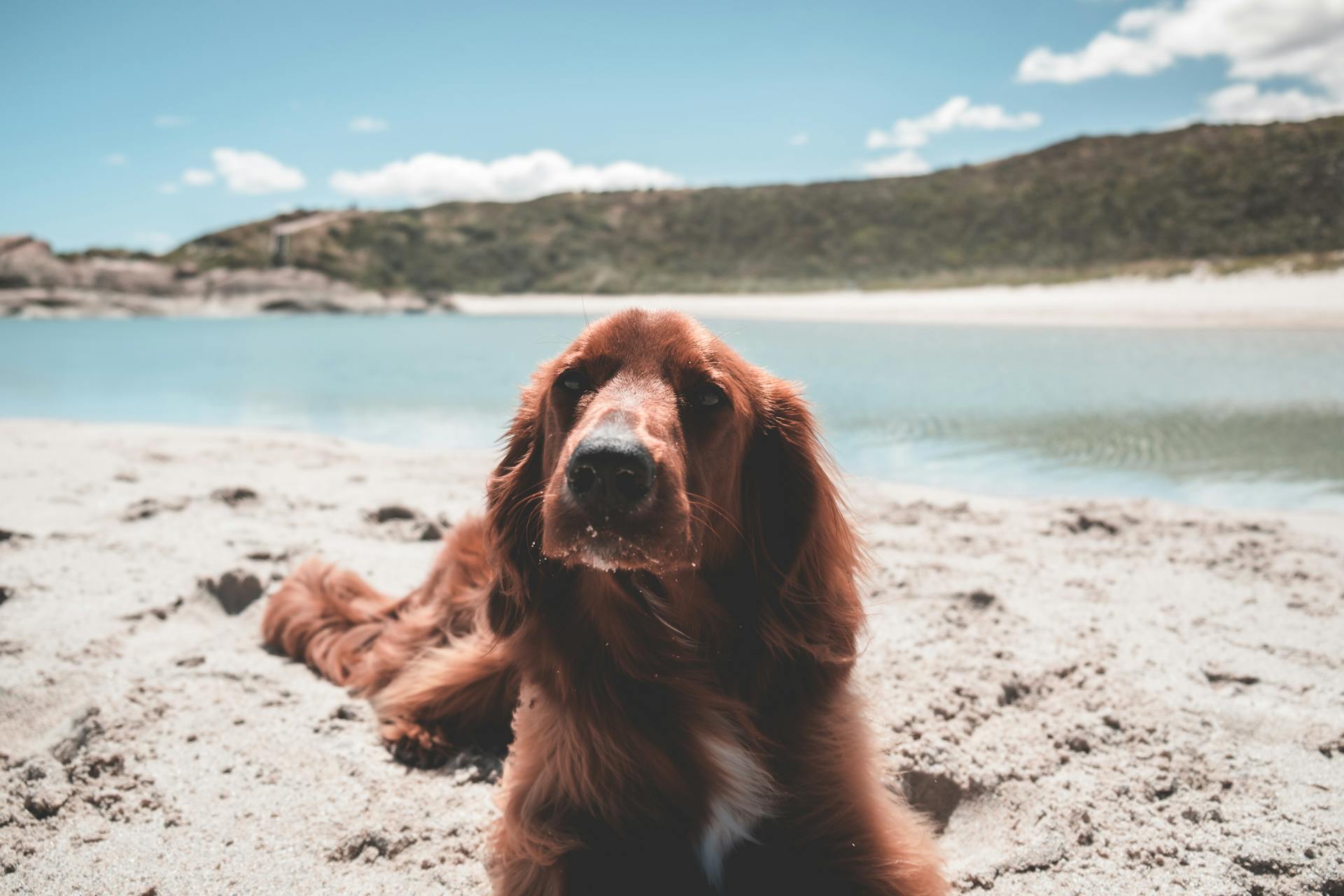
The Irish Setter coat is a stunning feature of this breed. They have a thick, wavy coat that's usually red in color, but can also be a golden red or even a dark red.
Their coat is made up of two layers: a soft undercoat and a harsh outer coat. This unique combination helps to repel water and keep them warm in cold weather.
The Irish Setter's coat requires regular grooming to prevent matting and tangling. They need to be brushed several times a week to keep their coat looking its best.
Their coat is also relatively low-maintenance when it comes to shedding. They tend to shed their coat in the spring and fall, but it's not as heavy as some other breeds.
Irish Setter Coat
The Irish Setter's coat is a beautiful feature of the breed.
The coat on the head and forelegs is short and fine, while the rest of the body has a moderate-length coat that's flat.
Long, silky feathering adorns the ears, legs, chest, belly, and tail, adding a lovely touch to the breed's overall appearance.
The coat comes in a range of shades, from deep mahogany to rich chestnut.
A small amount of white on the chest is possible, but not always present.
Lighter shading around the feathering is also a characteristic of the breed's coat.
History and Breed
The Irish Setter breed dates back to 18th-century Ireland, where it was known as "Madra Rua", or "red dog." This name translates to red dog in Gaelic.
Early versions of the breed had white coats with red blotches, similar to the Irish Red and White Setter. The Earl of Enniskillen developed the rich, red coat that the breed is renowned for today in the early 1800s.
The Irish Setter was bred by Irish hunters to work on any terrain and in any climate. They're excellent at scent-hunting, pointing, and retrieving, and are especially well-suited for hunting on the wetlands.
The breed was developed by mixing the Old Spanish Pointer, setting spaniels, and early Scottish setters. Irish hunters needed a dog that could point, track, and retrieve game birds effectively.
The Irish Setter arrived in the United States in the early 19th century with Irish immigrants. The American Kennel Club recognized the breed in 1878, and by the 1970s, Irish Setters were considered one of the most popular breeds in the United States.
The breed's popularity can be attributed to its versatility and hunting ability. Irish Setters were used for hunting game birds in Ireland and America, and their energy and endurance made them well-suited for this task.
Explore further: Shiba Inu United States
Characteristics and Maintenance
Irish Setters are the epitome of a medium-sized dog, typically standing about 22 inches tall at the shoulder and weighing between 45 and 65 pounds.
They have a beautiful, flowing coat that requires regular maintenance. Brush your Irish Setter's coat at least twice a week with a soft-bristled brush or pin brush to keep it looking its best.
Their coat can vary in length and thickness depending on whether they're bred for the show ring or for hunting purposes. Show dogs tend to have a thicker, longer, more mahogany-colored coat, while hunting dogs have a thinner, shorter, and more chestnut-colored coat.
To keep your Irish Setter's coat in top condition, use a long-toothed comb as necessary to work out any tangles. Regular ear cleaning and dental hygiene are also essential for their overall long-term health.
Here are some key characteristics of the Irish Setter coat:
Their magnificent coat color can vary from a solid red to a mahogany color, as described by a passionate Irish Setter enthusiast as a "chestnut thoroughbred on a May morning in the sun."
Intriguing read: English Springer Spaniel Tricolor
Characteristics and Maintenance
The Irish Setter is a medium-sized dog with a beautiful, flowing coat that's a joy to behold. They typically stand about 22 inches tall at the shoulder and weigh between 45 and 65 pounds.
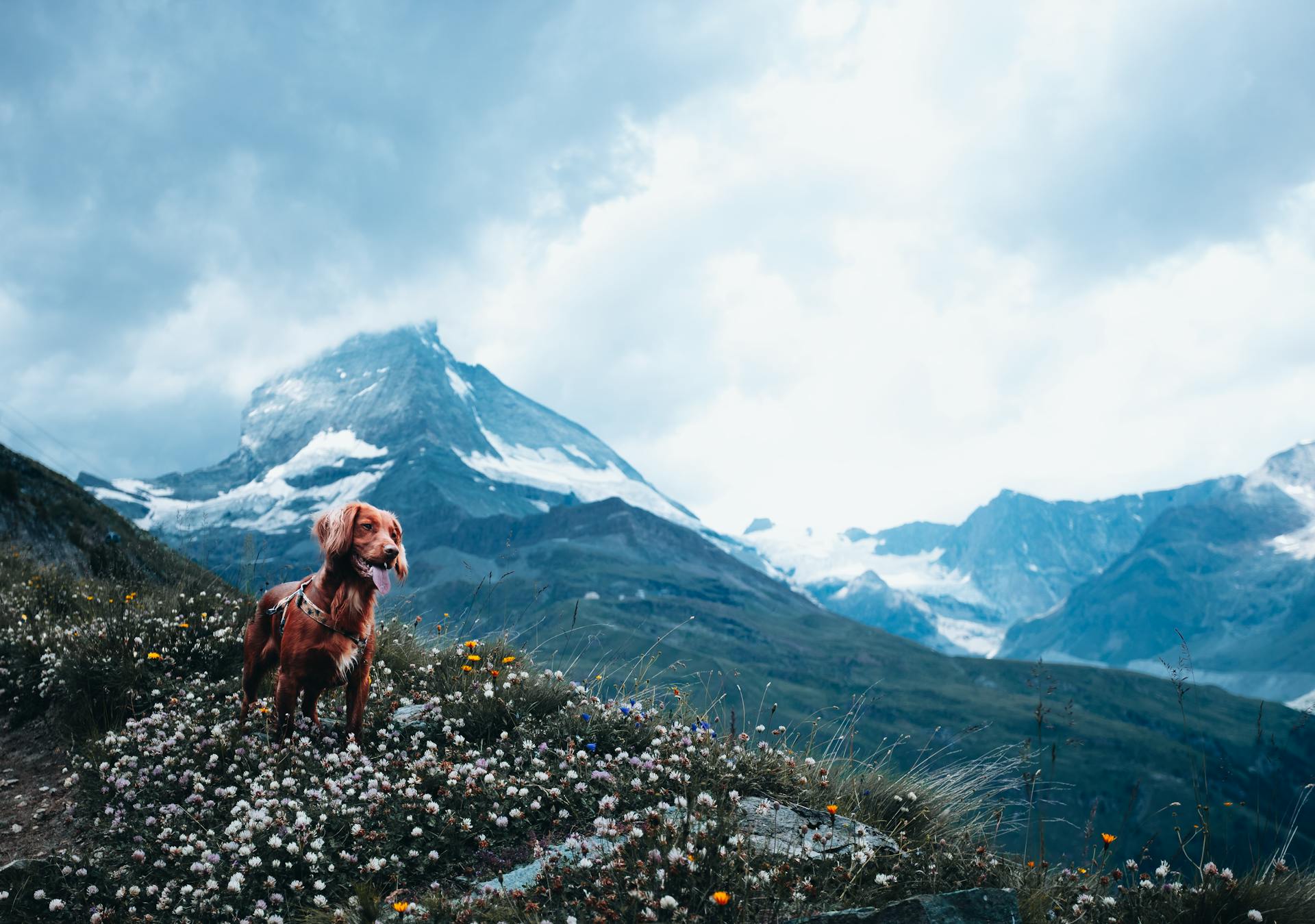
Their coat is one of their most distinctive features, with a standard solid chestnut or mahogany red color. However, some Irish Setters may have patches of white on their toes or chest. The hair itself is fine and straight, and fairly long, with feathered areas including the ears, chest, tail, legs, and stomach.
To keep their coat in good condition, daily to weekly brushing is a must. Pay extra attention to the longer areas, such as the ears, tail, and other feathered places, as burrs love to hide in there. Spritzing with water can make brushing and combing easier.
Irish Setters are highly energetic dogs that require vigorous daily exercise. They're not recommended for apartment life or for sedentary families, and need a huge yard where they can run and play often. Without this exercise, they can become frustrated, which could lead to difficulties in training.
Here's a quick rundown of the Irish Setter's size and weight:
Regular grooming is essential to keep their coat looking its best. This includes regular brushing, nail trimming, and ear cleaning. With proper care, your Irish Setter will be a happy and healthy companion for years to come.
Grooming
An Irish Setter's coat requires regular brushing to keep it looking its best, so aim to brush it at least twice a week with a soft-bristled brush or pin brush.
Their long ears make them more susceptible to ear infections, so it's essential to check and clean them regularly.
Use a long-toothed comb as needed to work out any tangles in their coat.
Maintaining good dental hygiene is crucial for their overall long-term health, so brush their teeth regularly and consider professional dental cleanings.
Broaden your view: Why Are Labrador Retrievers so Popular
Similar Maintenance Breeds
If you're considering bringing home an Irish Setter, you might want to know that there are similar breeds that require similar maintenance. The Kerry Blue Terrier is a great example, with a 94% similarity score in terms of maintenance needs.
These breeds all require regular grooming to prevent matting and tangling of their fur. The American Eskimo, for instance, needs to be brushed several times a week to prevent matting.
Readers also liked: Types of Bernese Mountain Dog
They also need regular exercise to stay happy and healthy. Bedlington Terriers, for example, require daily walks and playtime to keep them active.
If you're willing to put in the time and effort, these breeds can make wonderful companions. The Irish Red and White Setter, with its 88% similarity score, is another great option to consider.
Here are some breeds that are similar to Irish Setters in terms of maintenance needs:
Pointing and Training
Irish Setters have come a long way in their pointing abilities, with many now consistently pointing game before they're a year old.
Years ago, it was common for young Irish Setters to road and never really come to a full stop on their birds, taking up to three years to develop this skill. Thankfully, this is no longer the case.
The Irish Setter's pointing posture varies between American and Irish standards. The Irish standard requires a standing or crouched position, with an intense and rigid set, while the American standard requires them to point standing tall.
In American field trials, Irish Setters are expected to be "high on both ends" when they point, which is why their head and tail should be held high.
Here's an interesting read: 100 Years Ago Original Boston Terrier
Featured Images: pexels.com
